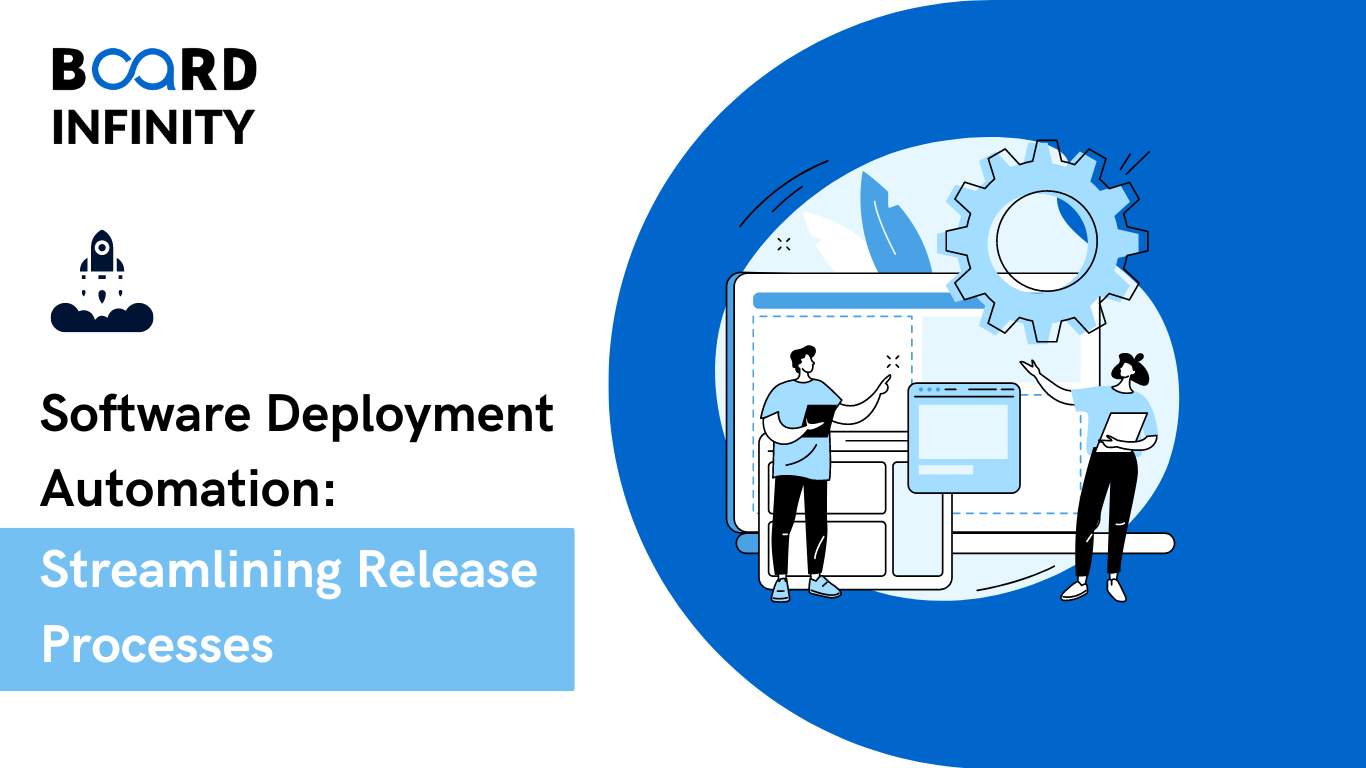
Automation processes have made life simpler for developers. They do not need to manage tasks to release new updates to their software manually. Using automation tools, they can save time by automating tasks such as copying files and running scripts. In addition, these automation tools ensure proper testing and deployment of the right servers. Most importantly, these tools minimize the chances of errors and help developers release new software updates faster.
What is Software Deployment Automation?
Deployment automation is a process in which developers use special automation tools to change the code of a software program. This is important for the continuous delivery and integration and for the safe movement of a code through different stages. It is one of the key parts for developers to develop faster software. Most importantly, automation makes development reliable and allows developers to avoid delays.
Difference Between Build Automation and Deployment Automation
There is a difference between build automation and deployment automation. Let us discuss both processes separately in the following points:
a. Build Automation
In build automation, developers put together the different parts of the software, such as code and necessary files. After that, they prepare it and provide a final product.
b. Deployment Automation
However, deployment automation is about making software useful to people. Developers place the codes and files in the right place. So that users do not have difficulty in using it.
What are the Benefits of Deployment Automation?
Automation reduces efforts and saves developers time. In addition, manual deployments are much more prone to errors, and automation minimizes their mistakes. Furthermore, it works on standard parameters, is repeatable, and performs with consistency. Most importantly, it improves collaboration among teams.
Execution of Automated Deployment
Automation deployment includes essential steps, such as code building, testing, and deployment. These essential steps improve the functioning of the software and improve overall productivity. Let us steps of the deployment process:
- Make code changes and maintain the record of different versions.
- The system will start processing after you save the changes.
- Ensure that it works properly before you release it to users.
- It is the time to deploy build artifacts into a staging environment for further testing.
- Next, developers deploy changes to the production environment.
- Monitor tools and analyze to gain insights into the success of the deployment.
Tools for the Deployment Automation Process
You can use different tools such as DevOps and Bitbucket Pipelines, to streamline the software development process. These can help set up the automated workflows of different kinds of software. For example, if anyone is working to deploy new versions of the gym automation software, these tools can help. At the same time, these are useful for automatically building tests and deploying quick changes.
Common Challenges in Deployment Automation
Developers often face some common challenges when deploying automation. Let us discuss those in the following points:
a. Requirements of test automation: Sometimes, developers need to check again and again to ensure that new code changes work correctly.
b. Relying on manual testing: To satisfy their needs, developers still rely on manual testing, which could be time-consuming.
c Lack of test automation: The unavailability of automated tests can slow the deployment process.
d. Integration difficulties: It is challenging for developers to use different automation tools together.
e. Inadequate documentation: Lacking documentation regarding the automation process makes it harder to use and maintain.
f. Security risks: Automation comes with different challenges, such as data becoming vulnerable to attacks.
Methods to Tackle Challenges
Developers should start with smaller and more manageable processes for task automation. Ensure that the processing of all parts in the deployment process works together effectively. In addition, they should use the best practices to keep their system consistent. Increasing the number of tests is better to gain confidence in the code before deployment.
Practices to Adopt for Deployment Automation
Keeping a record of all changes that developers make in their code is one of the best practices for automation deployment. It helps them to fix earlier versions. Set up a standardized environment for all stages of the deployment automation.
Furthermore, for the people who work as a team, it is better for them to have clear visibility. Therefore, each team member should see the deployment process. Manage your mistakes using the undo option and make the product more reliable.
Conclusion
Keep the software up to date and enable users to easily use the product. It is an effective method to improve the efficiency of your team members. Deployment automation is not only the process of launching a feature or an update. Improving end-user experience is one of the basic purposes of this process. This process allows developers to refine their features, and they evolve the software to meet the needs of their users and expectations. It is not only about removing mistakes and updating software. The processes of updating software are important to make advancements and improve the quality of the software.
